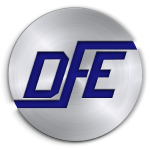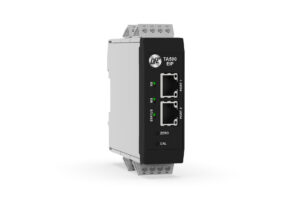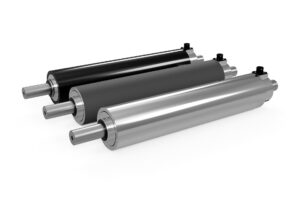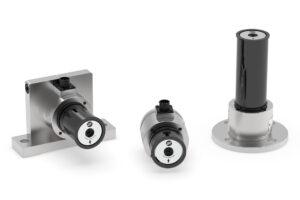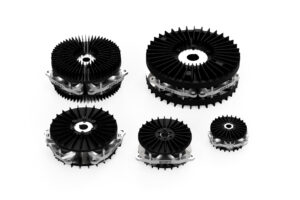Web Tension Control
The importance of controlling web tension in the unwind, intermediate and rewind zone.
WHAT IS WEB TENSION CONTROL?
Web tension control can be defined as the maintenance of a set amount of web tension (pull or force) for a material being processed. Often measured in oz, lbs, grams, kg, or newtons — proper tension must be maintained to prevent stretching, wrinkling, breaking or inconsistent registration of material during printing or converting processes.
Web tension control improves uniformity in coating applications and material lamination while decreasing the incidence of rewind defects such as crushed cores, starred rolls, edge curl and telescoped rolls. When web tension is under control it can enable processes to run at higher speeds while reducing scrap, delivering a rapid return on investment that boosts producers’ long term profitability.
The most reliable means of calculating web tension is by measuring force on an idler roll paired with load cells (also called transducers). The resulting load cell strain gauge output provides a proportionate signal that is used to monitor feedback and adjust output in a closed-loop control system.
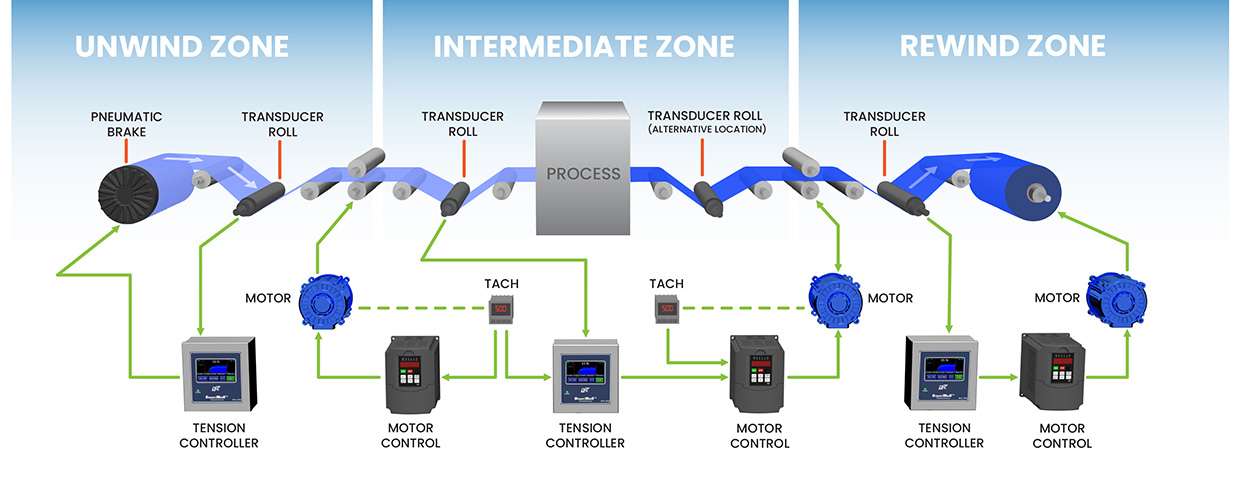
Web tension control is most commonly used in three zones: Unwind (infeed), Intermediate (process), and Rewind (take up).
In the unwind zone, infeed roll hold-back torque is often controlled by an electric or pneumatic brake. The web strain or tension resulting from this torque is regulated by a closed-loop controller to prevent web drooping, stretching or wrap-up incidents ahead of transiting to the intermediate zone.
Proper maintenance of intermediate zone tension is often critical to ensuring the quality of coating, laminating, curing, treating or slitting processes. This zone is typically controlled by a set of driven nip rollers which dictate line speed to the entire system. This speed reference is matched in the unwind and rewind by virtue of having to accelerate or decelerate in order to maintain a desired tension set point.
Proper tensioning in the rewind zone ensures under or over-tight rolls and their associated defects are prevented. Rewind zone torque is often controlled by the motor drives of center or surface winders. Implementing progressive taper tension techniques during winding is an effective way to ensure finished rolls maintain spring tension stability and do not experience material shift and core deformation during handling and storage.
From process start to finish, it’s clear that reliable web tension control is the key to ensuring maximum system efficiency and quality of finished products.
Typical tension control solutions incorporate:
• A closed-loop tension controller such as the SteadyWeb™ 6
• A load cell such as the Tension Roll® Transducer
• A Pneumatic Brake, Magnetic Particle Brake, Clutch or Motor Drive System
Customers integrating tension control with a PLC most often utilize:
• A load cell signal amplifier such as the TA1 TrueTension™ Amplifier
• A load cell such as the Tension Roll® Transducer, a pair of convertible load cells such as the Model C Series Transducers or Under Pillow-Block Transducers such as the Model F Series
Do you have a similar tension application that you would like to discuss?
Complete the form below and a DFE Applications Engineer will contact you shortly.
DFE does not share information with 3rd party advertisers.
